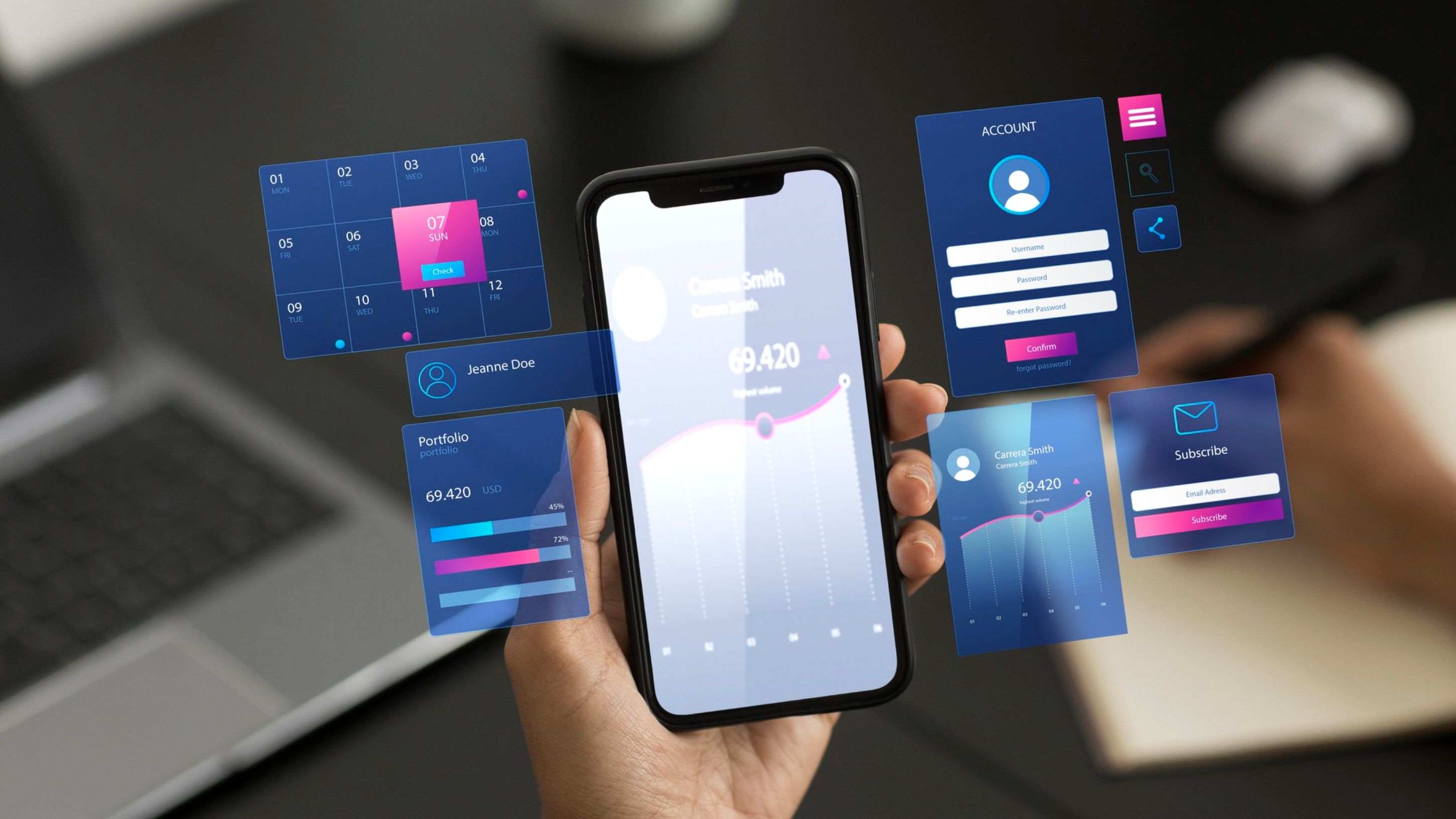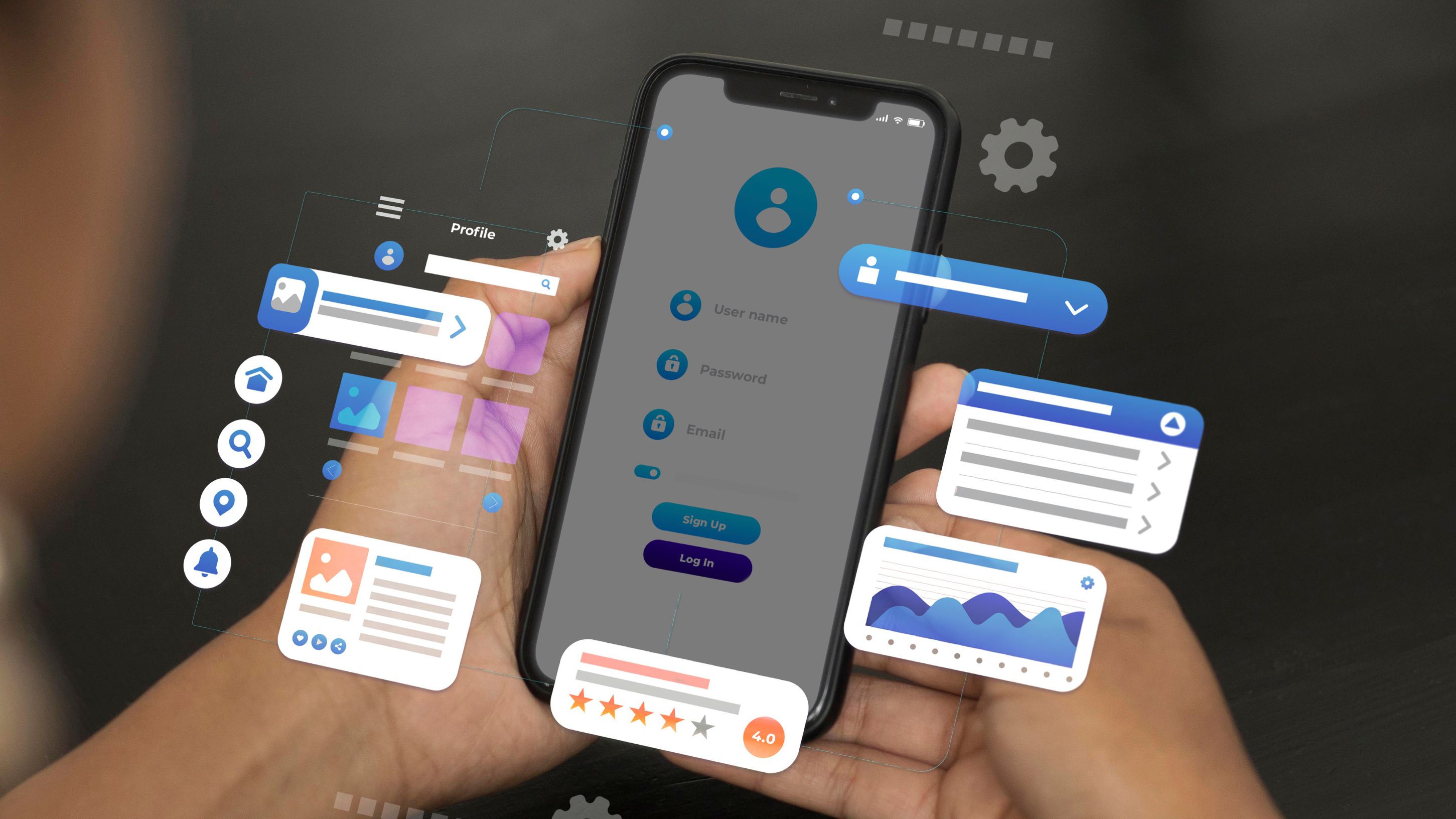E-commerce marketplace undergoes unpredictable growth & helps various brands to sell their product for increased ROI. Every business, whether it's a startup or an established one, wants to grow its reach to provide valuable insights in the competitive market. Amazon is a leading e-commerce platform that has been followed by Etsy, Aliexpress, Ebay, and many more. Relying on a multi-vendor app like Amazon is a great opportunity for businesses to capitalize on the potential of the thriving industry.
Thousands of entrepreneurs were finding a way to grow their business online, where more and more customers can reach and place orders. They want to have a free one on one consultation to grow their brand to new heights. To accomplish this, building a multi-vendor app is the best one to grow your business presence and make it visible to a large number of users.
Constructing a multi-vendor app like Amazon involves many parameters from initiation to execution. In this guide, we will deep dive into every factor involved in creating an application like Amazon.
Understanding Multi-Vendor App
Multi-vendor platform is an online store that enables various brands to sell their products, and some amount of commission to e-commerce store owners. An account is created to sell their products from a unified platform and manage the revenue. It is considered the best option for both parties to grow their business & to get more customers. Also, the sellers can collaborate with the community to gain higher visibility.
A few stats show how the E-commerce market skyrocketed and gained higher reach in this competitive era.
- eCommerce sales will explode to a whopping $8 trillion by 2027.
- 9.49% CAGR in the time of 2024-2029, resulting in reaching a US$6,478.00 billion by this year’s end.
- As per Statista, the e-commerce market growth shows an annual growth rate (CAGR 2025-2030) of 6.29%, resulting in a projected market volume of US$4.96tn by 2030.
- eCommerce user penetration expected to rise from 40.5% in 2024 to 49.1% by 2029.
Prominent Point To Be Considered When Building a Multi-Vendor App
Before designing the multi-vendor app, it’s important to get through the important points that should be focused on.
Improved User Experience
It’s necessary to design an e-commerce app that is user-friendly & provides smooth interfaces and navigation. The few things that need to be checked, i.e, fast load time, processes, as well as visually appealing design for an exceptional experience.
Meet Security Guidelines
Trust plays a pivotal role in every aspect. The application should meet the security standards and follow various encryption protocols to keep the data safe from third parties or intruders.
Product Offerings
To meet the diverse customer base, there should be a variety of product ranges to encourage users to get more. A broader selection will help them to get the options and find the best.
Marketing
The right marketing strategies are helpful to ensure your business meet the business needs. There are various tactics, i.e, SEO, social media, ads campaigns to reach the potential users.
Mobile Optimization
Mobile is the strongest medium for shopping. Your application must be optimized for mobile devices. It should be user-responsive for a seamless shopping experience. Go for a reputed mobile app development company to build a user-responsive multi-vendor application.
Types of Multi-Vendor Models
Multi-vendor platforms help businesses to collaborate, transact, and grow. Such platforms help suppliers & enterprises to follow the workflow & choose the right one that aligns with your needs and perspective.
1. Horizontal B2B Marketplace
Horizontal marketplace connects businesses across multiple industries and provides various types of products in one place. For example, Alibaba, IndiaMart help enterprises from raw materials to finished goods from vendors. This model increases reach & cost effectiveness for larger buyers. If you are looking for app development companies in Boston for a multi-vendor application, go for the reputed option.
2. Vertical B2B Marketplace
Vertical marketplace focuses on a single industry rather than a broader one. For example, i.e, industrial suppliers or healthcare suppliers come with a single domain-specific & customized pricing that builds trust & transparency.
3. Curated B2B Marketplace
This model enables vendors to maintain the quality and reliability of the product. A few examples include Faire, Anvyl, which handle everything from logistics to payments. Also, providing enterprises with enterprise-grade assurance to meet the demands.
4. Aggregator Model
Multiple suppliers in a single brand make the operations smoother & hassle-free. For corporate buyers, it includes everything from standardization & centralized billing.
5. SaaS Based B2B Marketplace
The marketplace is connected with SaaS tools, i.e, CRM, analytics, and automation to manage the operations & customer relationships. It is effective in such an ecosystem where software and services are intertwined.
6. Private Marketplace
Various larger organizations build multi-vendor platforms to manage procurement with suppliers and partners. For example, a supplier network, as well as procurement, a centralized hub contains everything to improve efficiency to perform global operations.
7. Subscription-Based Model
In this model, suppliers, distributors, as well as buyers pay fees for premium visibility. For example, B2B trade networks generate revenue and increase the leads for higher trading opportunities.
How to Build an App Like Amazon
There are many common mistakes developers make during building an application. Here, we will deep dive into how to build a multi-vendor app like Amazon.
Choose the Marketplace Model
Launch as a multi-vendor online marketplace where multiple sellers/vendors list their products for sale. You take the role of platform provider and take a cut whenever someone buys from or, in some cases, sells to the sellers using your platform. This prevents huge inventory costs up front.
Define Key User Roles
There are three main users on your platform:
- Shoppers: Search, compare, pay, and track orders.
- Sellers: Sign up, add products to your shop, manage stock and fulfill orders, and get paid.
- Admin: Ban/suspend sellers, edit product categories, deal with returns, commissions, offers, and platform settings.
Develop the core first (MML: minimal marketable lens or MVP: minimum viable product).
- Prioritise fundamental features before the challenging ones:
- Product catalog and category filters
- Search bar with sorting options
- Product detail pages (images, specifications, reviews)
- Add to cart and secure checkout
- Follow up on the orders and update the status of delivery.
- Product and order system dashboard for sellers
- Admin dashboard for platform control
- Pawn stuff like loyalty programs, live streaming shopping, warehousing logistics or in-app ads until later.
Select the Technology Stack
Use modern, scalable technologies:
- Frontend: React, Next. js, Flutter, or React Native
- Backend: Node. js, Django, or Spring Boot
- Database: MySQL or PostgreSQL
- Search Engine: Elasticsearch or OpenSearch
Storage & CDN: AWS / GCP / Cloudflare
This supports a smooth transition as the platform scales.
- Integrate Payments, Shipping, and Payouts
- Add multiple Payment Methods (UPI, Cards, Net Banking, Wallets).
- Integrate your shipping partners for automatic delivery and tracking notifications.
- Create a payment mechanism that removes your share and securely releases seller money.
Establish Trust, Safety & Quality
- Check sellers through KYC and due diligence
- Only allow verified purchase reviews to prevent falsified ratings.
- Make clear your return, refund, and exchange policies.
- Monitor for fraud, suspicious orders, and duplicate accounts.
Launch and Grow Strategically
- SEO and Ranking optimize product pages for SEO and rankings.
- You can run the referral program and first order offers, and we also have a festival sale campaign you can work on.
- Max out your push notifications, WhatsApp alerts, and abandoned cart reminders.
- Analyse studies to recognise best-selling products, delivery choke points , and user behaviour.
Top Features of Amazon-Based Multi-Vendor App
Below, we will examine the crucial aspects of an Amazon-based multi-vendor application. Let us begin.
Smart Filters and Advanced Search
- Rapid product retrieval is facilitated by the application’s powerful search tools.
- The results can be filtered by price, brand, size, rating, time of delivery, and availability.
- The buyer’s journey is easier with the sort features of ‘Lowest to Highest’ and ‘Best Rated.
- The volumes of product offerings, browsing is pleasant.
2. Product Pages with Complete Information
- Each product page needs to have images, descriptions, offers, and specifications clearly displayed.
- Show seller details, delivery timelines, and genuine reviews.
- For the sake of transparency, highlight payment methods, warranties, return policies, and payment options.
- Trust and conversions are positively impacted by well-crafted product pages.
3. Secure Payments and Simplified Checkout
-
Users can effortlessly add products, change quantities, and apply discount codes.
- Various payment methods such as UPI, wallets, cards, and COD must be supported.
- Addresses can be stored for quicker future checkouts.
- Reducing friction during the checkout process enhances conversion rates as well as sales.
4. Notifications and Order Tracking
-
Show the order status from the time of packaging to the moment of delivery.
- Users can be alerted via app notifications, SMS, email, or WhatsApp.
- Provide precise expectations of delivery timelines and information on the courier.
- This highly advanced system builds user confidence and reduces support tickets related to customer inquiries.
5. Seller Dashboard
- Enable self-service registration, product management, and identity verification.
- They can change stock, pricing, offers, and order fulfillment.
- Clarify payout alongside sales, performance, and analytic insights.
- A competitive marketplace is maintained with a comprehensive seller panel.
6. Admin Management Panel
-
Settle platform category, fees, seller verification, and commissions.
- Administer orders, disputes, returns, and refunds through a single interface.
- Oversee product quality, performance metrics, and fraudulent behavior.
- This improves workflow quality and responsively maintains platform trust.
Technology Stack for Designing An App Like Amazon
Frontend (Web & Mobile)
- Web: Next. JS or Remix in TypeScript for SSR / ISR, accessibility, and SEO friendly product pages.
- Mobile: React Native or Flutter for cross-platform with native performance.
- UI: Tailwind CSS and Headless UI, Image CDN for those juicy responsive media.
Backend & Core Services
- Languages/Frameworks: Node. js (with NestJS) or Java (with Spring Boot).
- Service layout: ?Identity,?Catalog,?Search,?Cart, Checkout. Payments. Orders (master). Shipping., Reviews., Seller?, Notifications?
- API: GraphQL (for product discovery /bff), REST( transactional flows).
Data & Search
- OLTP: PostgreSQL or MySQL and with read replicas.
- Caching: Redis (sessions, carts, and hot SKUs).
- Search: OpenSearch or Elasticsearch with faceted search, synonyms, and typo correction.
- Analytics: BigQuery, Snowflake , or Redshift with dbt and Airbyte/Fivetran.
Messaging & Events
-
Kafka or Google Pub/Sub for orders, inventory, notifications events.
- Outbox pattern, for emit and idempotence consumers.
Infrastructure & Delivery
- Cloud: AWS or GCP with Kubernetes (EKS/GKE).
- Networking: API Gateway, WAF, rate limiting, private subnets, and NAT.
- CI/CD: GitHub Actions or GitLab CI, blue-green/canary deploys, feature flags.
Security & Compliance
- OAuth 2.1, short/long-lived JWTs, RBAC for admin and seller consoles.
- and use a secrets management tool like Vault/Secrets Manager, plus KMS/TLS 1.2+ and signed URLs for uploads.
- Compliance: Tokenize payments and record keeping cuts down on PCI scope.
Observability & Quality
- Logs, metrics, traces with OpenTelemetry, Prometheus, Grafana, and Loki.
- Synthetics and Rubber for PDP and checkout.
- Testing: contract tests, load tests, chaos behaviors, and automated accessibility checks.
Third-Party Integrations
- Payments: Stripe, Adyen, or Razorpay with webhooks.
- Delivery: Shippo, EasyPost, or own logistic APIs.
- Comms: Twilio, SendGrid, WhatsApp Business for alerts and OTPs
Cost Estimation of Building An App Like Amazon
Developing an app like Amazon requires proper planning and execution. When it comes to cost, there are various things based on the set of features you choose. Complications involved in developing them, ranging from Android, iOS, or web applications. Experience and knowledge are the major things to prioritize when hiring an Android developer, IOS developer, or Web developer.
Simple MVP Marketplace
Estimated Cost: $40,000 to $80,000
This version includes:
- Buyer and seller login
- Product listings and search
- Shopping cart and checkout
- Payments and order tracking
- Simple seller dashboard and admin panel
- Great for startups that are validating their idea or product market fit.
Mid-Scale Marketplace That Has Strong UX and Integrations
Estimated Cost: $80,000 to $180,000
This level adds:
- Advanced search and filters
- Catalog management automation
- Coupons, offers, and referral programs
- Multiple courier integrations
- Performance-optimized UI
- Great for companies with rapid growth plans and consistent user acquisition.
Enterprise-Grade Marketplace Like Amazon
Estimated Cost: $180,000 to $350,000+
This category includes:
- AI-based product recommendations
- Warehouse/inventory automation
- Dynamic pricing engines
- Multi-currency and multi-region support
- Robust analytics dashboards
- High-level security and data compliance
- Designed for scale, high traffic , and long-term sustainability.
Conclusion
Building an app like Amazon is more than an eCommerce platform; it’s an integrated marketplace where buyers. sellers, logistics, payments, and customer experience all work eloquently together and can scale. The total investment can range depending on the breadth and depth of features, the technology employed, and future growth objectives. The majority of the businesses are best served through a lean MVP to determine market response and thereby calibrate user experience on the platform. As the marketplace evolves, advanced features such as AI recommendations, dynamic pricing, and automated fulfillment can be incrementally integrated. With the appropriate strategy, development partner, and operational preparation, your marketplace will be on its way to becoming a successful and sustainable industry, just like Amazon did over a period of time. For a smooth and user-responsive experience, hire ios developer, hire android app developer , Android, web, and react native developers for desired outcomes.















